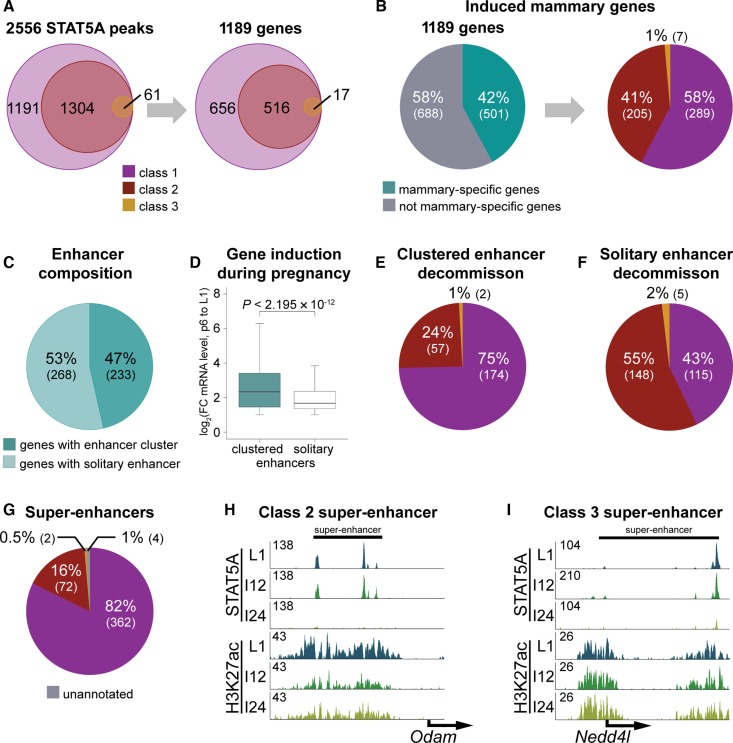Figure 4.
(A) Assignment of annotated enhancers to genes. The 1191 class 1 enhancers were assigned to 656 unique genes, the 1304 class 2 enhancers to 516 genes and the 61 class 3 enhancers to 17 genes. (B) Forty-two percent of the genes are associated with mammary-specific genes, which have a minimum of 2-fold induction between day six of pregnancy and day one of lactation. Out of those 58% (289) were categorized as class 1, 41% (205) as class 2 and 1% (7) as class 3. (C) Forty-seven percent (233) of the mammary-specific genes were associated with clustered enhancers and 53% (268) with solitary enhancers. (D) Genes assigned to clustered enhancers showed a significantly higher induction during pregnancy compared to those with solitary enhancers. Median, middle bar inside each box; IQR (interquartile range), the box containing 50% of the data; whiskers, 1.5 times the IQR. (E) Seventy-five percent of clustered enhancers belonged to class 1 enhancers with at least one enhancer decommissioned within 12 h; 24% (57) belonged to class 2 where at least one enhancer was decommissioned within 24 h, and two enhancer clusters belonged to class 3. (F) Forty-three percent (115) of solitary enhancers were decommissioned within 12 h (class 1), 55% (148) within 24 h (class 2) and 2% (5) were resilient during involution (class 3). (G) Mammary-specific super-enhancers are composed of differential enhancer classes. Eighty-two percent of the 440 identified mammary-specific super-enhancers had at least one enhancer decommissioned within 12 h; 16% (72) belonged to class 2 and two to class 3. (H) A class 2 super-enhancer, where all enhancers were intact after 12 h of involution, but decommissioned within 24 h of involution. (I) Representative of a class 3 super-enhancer with resilient enhancers after 24 h of involution.

